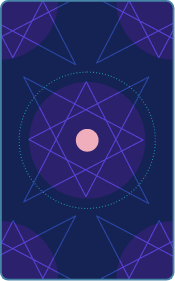
Although astrology and astronomy share a similar sounding name, overall, they’re very distinct and different practices. But, the two do share some similarities which we’ll discuss further in this article. Before we jump in, let’s review what each practice is defined as.
Astronomy
Everything that exists beyond earth’s atmosphere, the stars, planets, galaxies, comets, asteroids, even the universe itself is scientifically studied under the field of astronomy. Astrology would be quickly deemed as pseudoscience and completely meaningless by an astronomer.
Astrology
The positioning of heavenly bodies like stars and planets are believed to have an influence on Earth and its beings. This belief is prevalent in astrology and many astrologers hold the belief that a person’s birth date will hold significant meaning related to their personality and traits. Astrology also considers a person’s state of being or mind is directly impacted by the movements of celestial bodies and predictions about the future can be made.
How Astronomy and Astrology are Similar
The two studies are concerned with events, movements, and celestial bodies overall. Below are some of the ways that astrology and astronomy are similar.
Constellations
There are twelve Zodiac signs that correlate with the months in the year. Astrology believes these star constellations are apart of astronomical observations. The signs are named (in order) – Aries, Taurus, Gemini, Cancer, Leo, Virgo, Libra, Scorpio, Sagittarius, Capricorn, Aquarius, and Pisces.
Planets, Sun, and Moon
Because back in the day telescopes had yet to be invented, astrologers could only observe seven planets with the naked eye. The movements of the sun, moon, Mercury, Venus, Mars, Jupiter, and Saturn were considered to be important in classical astrology. Back then they referred to the moon and sun as “the lights” or “luminaries.”
Modern astrology includes Neptune, Uranus, and Pluto as additional heavenly bodies after the telescope was invented. Also, astrologers, these days have added Chiron and Ceres to their readings.
Precession of the Equinoxes or Axial Precession
There are two terms that refer to the precise moment the Earth’s equator passes the center of the sun which happens two times every year. “Axial procession” is what astronomers call it, and “the precession of the equinoxes” is what astrologers refer to it as. Basically, the earth moves westward following the path of the sun relative to fixed stars, or stars that appear to stand still. This gradual shift in the orientation of the Earth’s axis, also known as the precession of equinoxes, allows for the complete cycle of the slow rotation which occurs around every 25,722 years (astrologers argue over the exact number of years). “Astrological ages” are what astrologers call this cycle to determine how old zodiac signs are. These methods used help shape the universe to provide meaning and determine people’s association with the zodiac signs and the time of their birth. The ability to track celestial events and record the age, time, and significance add to astrologers' know-how and ability to predict events in the future.
















